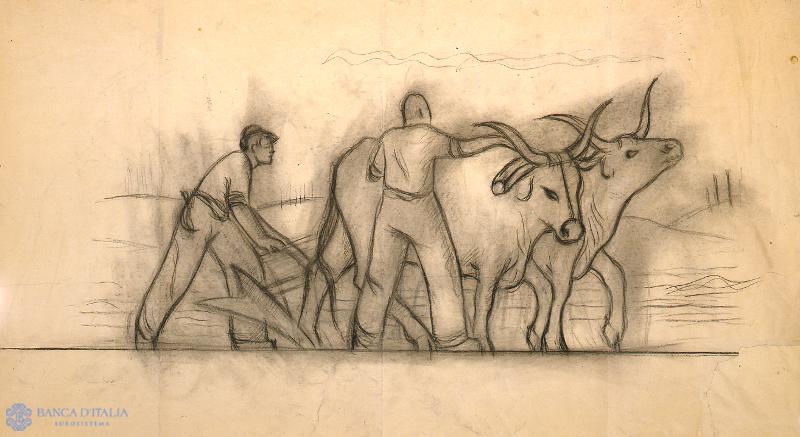Piero Sadun was born in Siena in 1919. He spent his youth between his native city and Florence, where he discovered painting at an early age. Expelled from secondary school under the Fascist anti-Semitic laws, he earned his diploma as an external student. In 1943 he was an active partisan in the mountains of Arezzo. After the war he moved to Rome, where in 1945 he debuted in a collective show with Scialoja and Stradone. Two years later the group was joined by Ciarrocchi; it was with these companions, introduced by Cesare Brandi, that Sadun showed his work at the Secolo Gallery. The exhibition confirmed his distance from the post-Cubist languages in vogue at the time, as well as from the group of young painters who later that same year would establish “Forma Nuova”. By then his painting – outmoded or, as Brandi would famously put it, “off the track” – was imbued with memories of Van Gogh, Scipione and Soutine, dense with material applied in serpentine bursts on the canvas; this is the expressive key in which his first fully mature works were created, such as the marvellous series of Portraits of Don Luigi dating from 1946 and 1947.
In 1950 he exhibited for the first time at the Venice Biennale, returning in 1960 with a room of his own. During the decade that would be remembered for the establishment of Informalist materiality, Sadun – who was fully entitled to claim paternity of this language – instead limited his palette and appeared to absorb Morandi’s teachings, with outcomes not unlike those which Romiti was pursuing in Bologna. The year 1960 marked what would be his last season, characterized by his definitive espousal of abstract art. In this work Sadun initially recovers the dense material shaken violently onto the canvas of his early works, not very far from a certain notion of abstract expressionism; then he hushes that urgent expressiveness into silent and exquisite applications of colour, tending towards monochrome and, almost, to his own self-analysis.
Sadun died in Siena in 1974.
Piero Sadun
Piero Sadun (Siena 1919 - Siena 1974)
20th century AD



